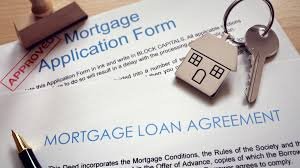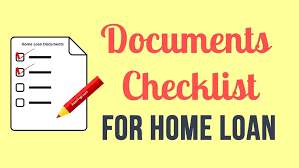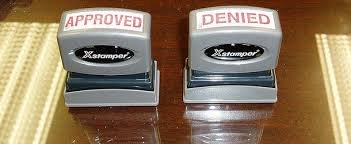These Are Our
Loan Process

01.
Pre-Qualification
Pre-qualification starts the loan process. Once a lender has gathered information about a borrower’s income and debts, a determination can be made as to how much the borrower can pay for a house. Since different loan programs can cause different valuations a borrower should get pre-qualified for each loan type the borrower may qualify for.
In attempting to approve homebuyers for the type and amount of mortgage they want, mortgage companies look at two key factors. First, the borrower’s ability to repay the loan and, second, the borrower’s willingness to repay the loan.
Ability to repay the mortgage is verified by your current employment and total income. Generally speaking, mortgage companies prefer for you to have been employed at the same place for at least two years, or at least be in the same line of work for a few years.
The borrower’s willingness to repay is determined by examining how the property will be used. For instance, will you be living there or just renting it out? Willingness is also closely related to how you have fulfilled previous financial commitments, thus the emphasis on the Credit Report and/or your rental payment history.
It is important to remember that there are no rules carved in stone. Each applicant is handled on a case-by-case basis. So even if you come up a little short in one area, your stronger point could make up for the weak one. Mortgage companies could not stay in business if they did not generate loan business, so it is in everyone’s best interest to see that you qualify.

02.
Mortgage Programs and Rates
To properly analyze a mortgage program, the borrower needs to think about how long he plans to keep the loan. If you plan to sell the house in a few years, an adjustable or balloon loan may make more sense. If you plan to keep the house for a longer period, a fixed loan may be more suitable.
With so many programs from which to choose, each with different rates, points and fees, shopping for a loan can be time consuming and frustrating. An experienced mortgage professional can evaluate a borrower’s situation and recommend the most suitable mortgage program, thus allowing the borrower to make an informed decision.

03.
The Application
The application is the true start of the loan process and usually occurs between days one and five of the start of the loan process. With the aid of a mortgage professional, the borrower completes the application and provides all Required Documentation.
The various fees and closing cost estimates will have been discussed while examining the many mortgage programs and these costs will be verified by the Good Faith Estimate (GFE) and a Truth-In-Lending Statement (TIL) which the borrower will receive within three days of the submission of the application to the lender.

04.
Processing
Once the application has been submitted, the processing of the mortgage begins. The Processor orders the Credit Report, Appraisal and Title Report. The information on the application, such as bank deposits and payment histories, are then verified. Any credit derogatories, such as late payments, collections and/or judgments require a written explanation. The processor examines the Appraisal and Title Report checking for property issues that may require further investigation. The entire mortgage package is then put together for submission to the lender.

05.
Required Documents
If you are purchasing or refinancing your home, and you are salaried, you will need to provide the past two-years W-2s and one month of pay-stubs: OR, if you are self-employed you will need to provide the past two-years tax returns. If you own rental property you will need to provide Rental Agreements and the past two-years’ tax returns. If you wish to speed up the approval process, you should also provide the past three months’ bank, stock and mutual fund account statements. Provide the most recent copies of any stock brokerage or IRA/401k accounts that you might have.
If you are requesting cash-out, you will need a “Use of Proceeds” letter of explanation. Provide a copy of the divorce decree if applicable. If you are not a US citizen, provide a copy of your green card (front and back), or if you are NOT a permanent resident provide your H-1 or L-1 visa.
If you are applying for a Home Equity Loan you will need, in addition to the above documents, to provide a copy of your first mortgage note and deed of trust. These items will normally be found in your mortgage closing documents.

06.
Underwriting
Once the processor has put together a complete package with all verifications and documentation, the file is sent to the lender. The underwriter is responsible for determining whether the package is deemed an acceptable loan. If more information is needed, the loan is put into “suspense” and the borrower is contacted to supply more information and/or documentation. If the loan is acceptable as submitted, the loan is put into an “approved” status.

07.
Closing
Once the loan is approved, the file is transferred to the closing and funding department. The funding department notifies the broker and closing attorney of the approval and verifies broker and closing fees. The closing attorney then schedules a time for the borrower to sign the loan documentation.
At the closing the borrower should:
- Bring a cashiers check for your down payment and closing costs if required. Personal checks are normally not accepted and if they are they will delay the closing until the check clears your bank.
- Review the final loan documents. Make sure that the interest rate and loan terms are what you agreed upon. Also, verify that the names and address on the loan documents are accurate.
- Sign the loan documents.
- Bring identification and proof of insurance.
After the documents are signed, the closing attorney returns the documents to the lender who examines them and, if everything is in order, arranges for the funding of the loan. Once the loan has funded, the closing attorney arranges for the mortgage note and deed of trust to be recorded at the county recorders office. Once the mortgage has been recorded, the closing attorney then prints the final settlement costs on the HUD-1 Settlement Form. Final disbursements are then made.
